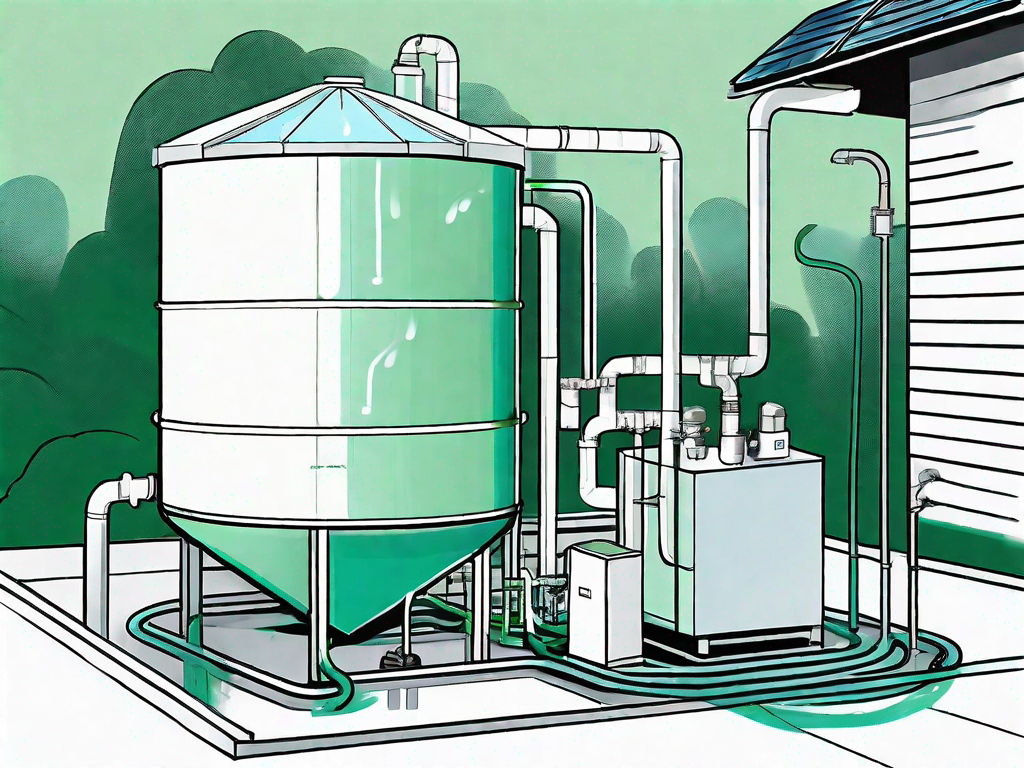Rainwater harvesting is an eco-friendly and cost-effective way to collect and store rainwater for various purposes. Whether you want to reduce your water bill or conserve water for gardening, a rainwater harvesting system can be a great addition to your property. In this article, we will explore the basics of rainwater harvesting, guide you through the planning and construction process, and discuss maintenance and safety considerations.
Understanding the Basics of Rainwater Harvesting
Before diving into the details, let’s understand why rainwater harvesting is important. The increasing global water crisis and the ever-rising demand for water make it crucial to find alternative sources. Rainwater harvesting allows us to utilize the water that falls on our rooftops and other surfaces, which would otherwise go to waste.
Not only does rainwater harvesting help alleviate the strain on traditional water sources, but it also offers numerous environmental benefits. By collecting rainwater, we can reduce the amount of stormwater runoff, which can lead to erosion and pollution of our waterways. Additionally, rainwater is naturally soft and free from the chemicals often found in tap water, making it ideal for various non-potable uses.
Now, let’s delve into the components of a rainwater harvesting system. A basic system consists of a collection surface, usually the roof, gutters or downspouts, a filtration mechanism to remove debris, storage tanks, and a distribution system to use the harvested water.
The collection surface, typically the roof, plays a crucial role in rainwater harvesting. The size and material of the roof determine the amount of water that can be collected. For example, a larger roof area will yield more water, while a smooth surface like metal or tiles allows for efficient water flow.
Next, the gutters or downspouts act as channels to direct the rainwater from the roof into the filtration mechanism. These components are designed to ensure that debris, such as leaves and twigs, are filtered out before the water enters the storage tanks.
The filtration mechanism is an essential part of the rainwater harvesting system as it ensures the water collected is clean and free from contaminants. Common filtration methods include mesh screens, sediment filters, and activated carbon filters. These filters remove particles and impurities, ensuring the harvested water is of high quality.
Once the rainwater passes through the filtration mechanism, it is stored in tanks or cisterns. These storage tanks can vary in size and material, depending on the needs and available space of the user. Some tanks are above ground, while others are buried underground to save space and maintain aesthetic appeal.
Finally, the distribution system allows the harvested rainwater to be used for various purposes. This can include irrigation for gardens, flushing toilets, washing clothes, and even for non-potable uses in commercial buildings. The distribution system typically involves pumps, pipes, and valves to transport the water to its intended destination.
Overall, rainwater harvesting is a sustainable and efficient method of utilizing a valuable resource. By understanding the components of a rainwater harvesting system, individuals and communities can make informed decisions about implementing this eco-friendly practice. Whether it’s for personal use or large-scale applications, rainwater harvesting offers a viable solution to address water scarcity and promote environmental stewardship.
Planning Your Rainwater Harvesting System
Before setting up your rainwater harvesting system, it’s essential to assess your water needs. Calculate your average water consumption for gardening, irrigation, or household chores. This will help you determine the ideal storage capacity for your system.
Next, evaluate your property for rainwater harvesting suitability. Consider the availability of rainfall, the size of your roof, the quality of the roofing material, and the accessibility of downspouts. Ensure that your property has enough space to accommodate storage tanks and the necessary equipment.
Building Your Rainwater Harvesting System
Choosing the right materials is crucial for the longevity and efficiency of your rainwater harvesting system. Quality gutters, downspouts, and filtration systems are essential. Opt for durable materials that can withstand extreme weather conditions. Consider incorporating leaf guards or mesh screens to prevent debris from entering the system.
Once you have gathered all the necessary materials, you can begin the construction process. Start by installing gutters and downspouts, ensuring they are properly sloped to direct the water flow towards the storage tanks. Connect your downspouts to a debris filter to remove leaves and other large particles.
The next step is to introduce a filtration mechanism for finer particle removal. This can be achieved through a sediment filter or a combination of filters such as sand, gravel, and activated carbon. Finally, connect your storage tanks to the filtration system and establish a distribution network that meets your specific needs.
Maintaining Your Rainwater Harvesting System
Regular maintenance is vital to keep your rainwater harvesting system functioning optimally. Periodically inspect the gutters and downspouts for clogs or damage. Clean or replace filters as needed to ensure efficient water flow. Additionally, you should inspect the storage tanks for leaks and make any necessary repairs.
Troubleshooting is also an essential part of maintenance. If you notice a decrease in water flow, check for obstructions in the gutters and downspouts. If the water quality seems compromised, it may indicate a need for filter replacement or cleaning. Stay vigilant and address any issues promptly to maintain the performance of your rainwater harvesting system.
Legal and Safety Considerations for Rainwater Harvesting
Before installing a rainwater harvesting system, it’s crucial to understand the local regulations and obtain any necessary permits. Some areas may have specific guidelines regarding the size of storage tanks or water usage restrictions.
Additionally, ensuring water quality and safety is paramount. Regularly test the harvested water for any potential contaminants, especially if you plan on using it for drinking or cooking purposes. Implement proper disinfection methods like UV treatment or chlorination, if necessary, to maintain water safety.
In conclusion, building a rainwater harvesting system is a rewarding and sustainable endeavor. It allows you to make efficient use of a valuable resource while reducing your environmental footprint. By understanding the basics, planning carefully, using quality materials, and following proper maintenance protocols, you can successfully build and maintain a rainwater harvesting system that suits your needs and contributes to a greener future.



